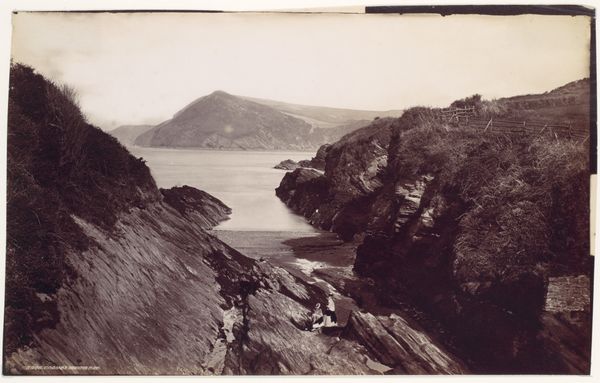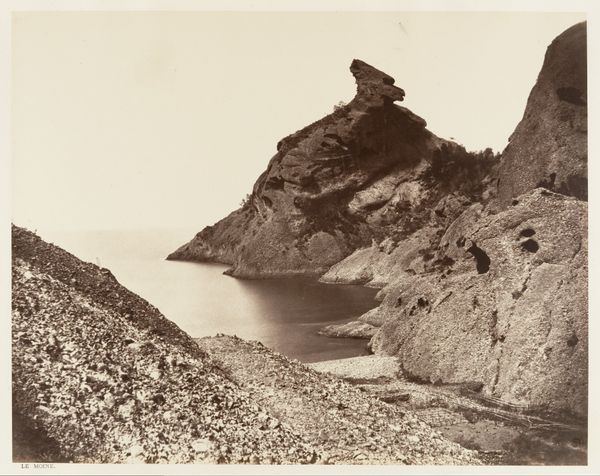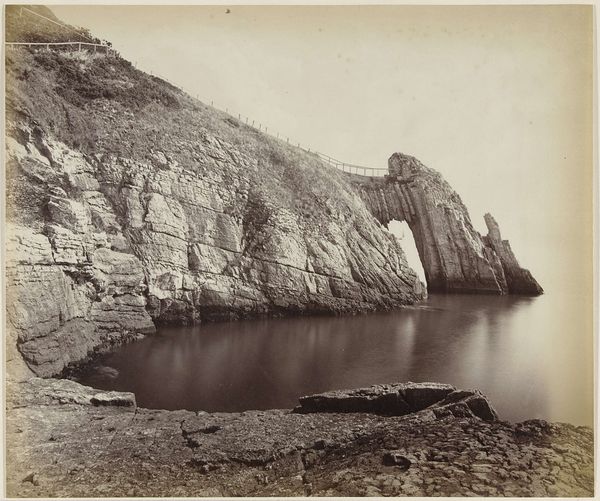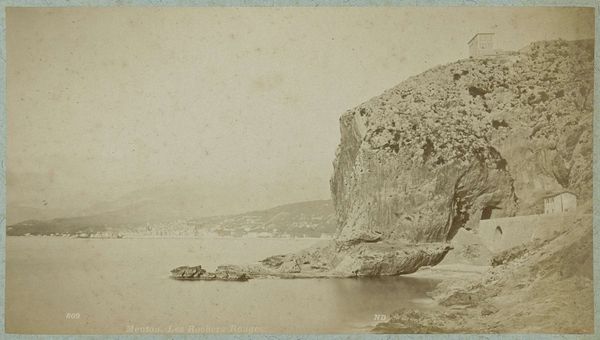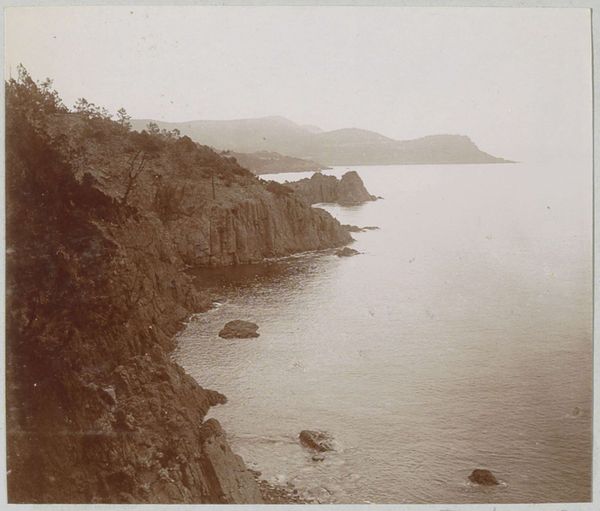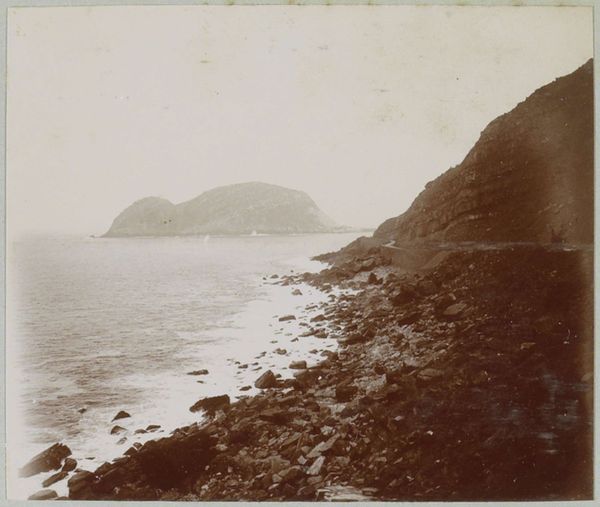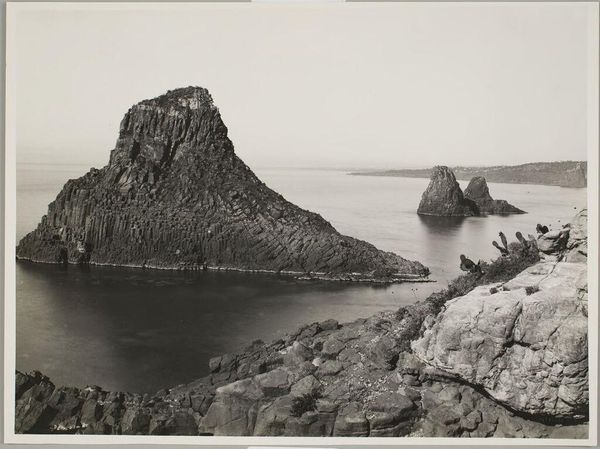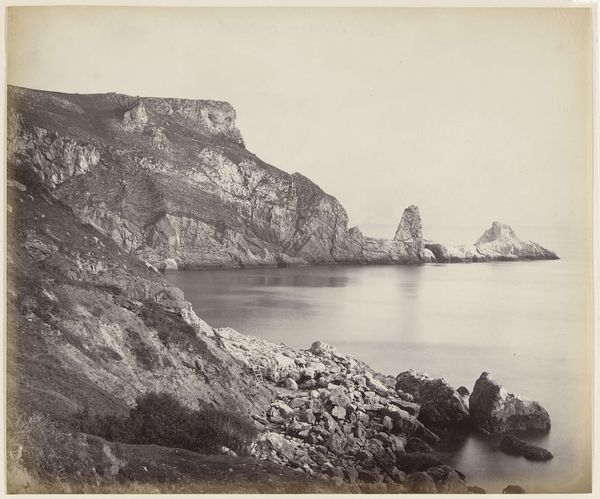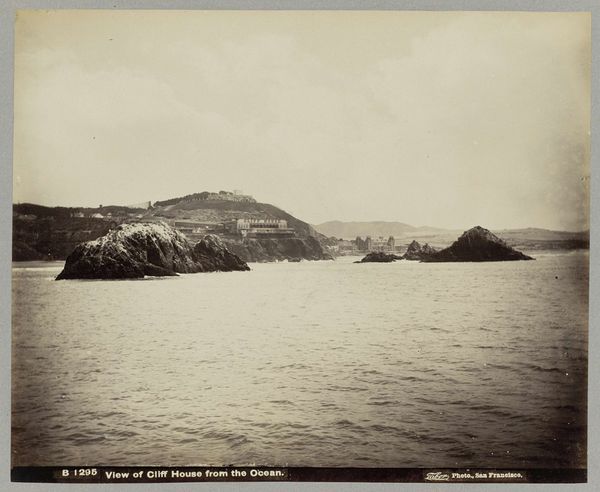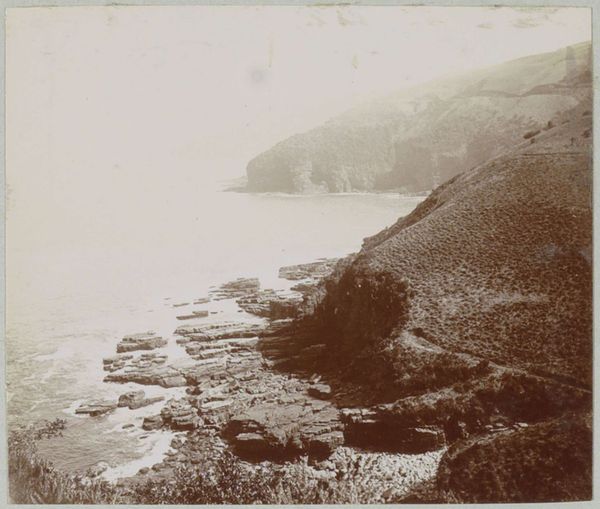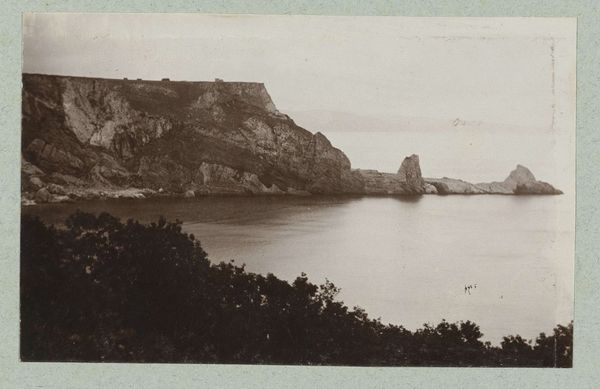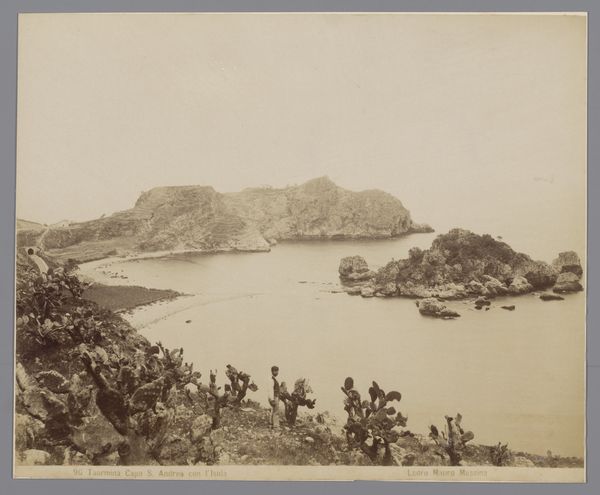
Dimensions: Image: 32.1 x 42.3 cm (12 5/8 x 16 5/8 in.) Mount: 46 x 60.5 cm (18 1/8 x 23 13/16 in.) Mat: 55.9 x 71.1 cm (22 x 28 in.)
Copyright: Public Domain
Curator: This striking gelatin-silver print, taken between 1860 and 1862, is titled *La Ciotat, Bec de l'Aigle* and comes to us from Edouard Baldus. Editor: There's a kind of hushed solemnity to it. That monolithic rock formation almost seems to have a face carved into it, gazing out to sea. Curator: It is an arresting composition. What Baldus has done here, of course, is place that imposing natural formation within the shifting currents of France’s vision of itself. The burgeoning field of photography was employed to map, record, and even aggrandize a sense of national identity through images like these. Editor: The 'Bec de l'Aigle’—Eagle’s Beak—itself is so obviously suggestive. You’ve got this jutting prominence that evokes strength, mastery, almost a Roman gravitas, reinforced by the subtle textures of the rock suggesting wrinkles, implying age, permanence. It speaks to notions of rootedness, history. Curator: Absolutely. Photography during this period gained official status when it served such civic purposes. Preservation and visual inventory intertwined. However, in this period the medium was in it's technical infancy and Baldus had considerable skill for it to be this good. Editor: I see an intriguing duality. The stark monumentality of the rock face contrasted against the calming mirror-like quality of the water, this plays with the concepts of masculine vigor versus feminine tranquility in visual symbolism. Curator: That kind of dialectic—stability and change, nature versus culture—permeated the French consciousness at the time. There was anxiety alongside a spirit of optimism. Remember that this was happening during massive re-development within cities like Paris which both attracted and displaced thousands of people. Editor: The single building in the shot - positioned on the middle-right as it is - feels like an act of subtle human imposition, doesn't it? An assertion of a different order over this powerful, primordial entity. Curator: And it makes you wonder about access—who gets to possess these views, to reside so intimately within the grand narrative Baldus crafts. The political stakes are palpable if one considers land ownership, wealth, and prestige during the Second Empire. Editor: A fitting marriage of natural grandeur and political aspiration, frozen in sepia tones. The weight and complexity behind such images become even richer as one uncovers the symbology and intent behind its existence.
Comments
No comments
Be the first to comment and join the conversation on the ultimate creative platform.
